1. Resin Modified Glass Ionomer Cements
1.1. Components :80% glass ionomer cement and 20% resin .
1.2. Advantage : Slightly greater bond strengths and release greater amounts of fluoride compared to conventional GIC,mechanical properties of all glass ionomers increase with time,bond to tooth structure,low microleakage when mixed properly ,ease of mixing and use(because multiple bonding steps are not required) , adequately low film thickness.
1.3. Disadvantage : Application to moist dentin produce little post-cementation thermal sensitivity,water sorption
1.4. Notes : Research has not shown reduced caries levels around restorations cemented with fluoride-releasing cements because a cement film of only 20–30μ is exposed at the marginal area after the restoration is cemented
1.5. Properties
1.5.1. Sitting Time : 4-6 min
1.5.2. Film thickness : 20-25 µm
1.5.3. Solubility : 1,3 %
2. Zinc Oxide Eugenol Cement
2.1. Components : Powder : ZnO, covered with Zn stearate, Zn acetate – accelerators, Al2O3 – to improve strength. Liquid : eugenol, oil, rosin, acetic acid - accelerator, poly(methylmethacrylate) to improve strength
2.2. Advantage : Biocompatible, inexpensive ,Good biological properties (pH 7 after setting,Antibacterial properties , Sedative effect, Fast setting in the mouth environment (presence of water),Ease to dislodge
2.3. Disadvantage : a high film thickness,Low strength, solubility, hand mix,High solubility in water, Inhibits free radical polymerization
2.4. Notes
2.4.1. For provisional cementation
2.4.2. Use with retentive preparations
2.5. Properties
2.5.1. Sitting Time : 4-10 min
2.5.2. Film thickness : 25 µm
2.5.3. Solubility : 0,04 %
3. Resin Cements
3.1. Components : Methacrylate based depending on the curing mechanism, contain chemical and/or light initiators
3.2. Advantage : The adhesion produced by the acid-etch technique to enamel and dentin, their low solubility ,Provide more retention than conventional cements,Bonding of high-strength ceramic crowns will increase crown retention to teeth with short clinical crowns
3.3. Disadvantage : Difficult cleanup and multiple steps for bonding
3.4. Notes : Vary in composition (paste-paste, single paste or powder liquid), curing mechanism (light cured,dual cured and chemically cured) and bonding mechanisms (total etch, self-etching). The bonding agent used with a resin cement should be compatible with the cement chemistry to ensure an optimal bond Currently the best results are obtained with a dual-cured cement and a light-cured or dual-cured bonding agent Setting reaction based on polymerization
3.5. Properties
3.5.1. Sitting Time : 2-4 min
3.5.2. Film thickness : 10-30 µm
3.5.3. Solubility : 0-0,01 %
4. Reference :
4.1. Contemporary Permanent Luting Agents Used in Dentistry: A Literature Review - Int Dent Res 2011;1:26-31
4.2. A Practical Guide To The Use Of Luting Cements - 2008
4.3. Phillips´s Science of Dental Materials, KJ Anusavice, Sounders 2003
5. --
6. Zinc Phosphate Cement
6.1. Acid-base reaction cement
6.2. Components : Powder is zinc oxide + Magnesium oxide ( is used as a modifier ) while other oxides such as bismuth and silica may be added . Liquid : phosphoric acid, water, aluminum phosphate, and sometimes zinc phosphate.
6.3. Advantage : Successful clinical history
6.4. Disadvantage : Leakage, hand mix, low retention The pH of the newly mixed zinc phosphate is less than 2.0 but rises to 5.9 within 24 hours and is neutral (pH 7.0) by 48 hours = Postcementation hypersensitivity
6.5. Notes
6.5.1. Exothermic reaction : The working time can be prolonged by mixing the material on chilled glass slabs
6.5.2. Zinc phosphate serves as the standard by which newer cement systems are compared.
6.6. Properties
6.6.1. Sitting Time : 5-6 min
6.6.1.1. How can be setting affected:
6.6.1.1.1. Faster setting : 1- Finer particles by increase in particle surface accesible to an acid attack. 2- Dilution of liquid 3- Higher powder/liquid ratio
6.6.1.1.2. Prolongation setting : 1- Lower temperature = cooled mixing glass slab . 2- Fast mixing
6.6.2. Film thickness : 20 µm
6.6.3. Solubility : 0,06 %
7. Zinc Polycarboxylate Cement
7.1. Acid-base reaction cement
7.2. Component : Powder is zinc oxide, magnesium oxide, bismuth, and aluminum oxide. It may also contain stannous fluoride ( increases strength). The liquid is an aqueous solution of polyacrylic acid or a copolymer of acrylic acid and other unsaturated carboxylic acids.
7.3. Disadvantage : Produces a mild pulpal reaction , a weak adhesive bond to the tooth, It has a short working time ,greater solubility than other cements, Low strength (lower resistance to the mechanical load), solubility, worse manipulation properties (too high liquid viscosity), High creep
7.4. Advantage : Biocompatible ( long molecular chains of the polyacrylic acid prevent penetration into the dentinal tubules), weak bond to tooth
7.5. Notes
7.5.1. The first cement to bond to tooth structure
7.6. Properties
7.6.1. Sitting Time : 5-6 min
7.6.2. Film thickness : 20-30 µm
7.6.3. Solubility : 0,06 %
8. Glass Ionomer
8.1. Acid-base reaction.
8.2. Components : Powder is aluminosilicates with high fluoride content,formed by the fusion of quartz, alumina, cryolite, fluortite, aluminum trifluoride, and aluminum phosphate. Liquid is polyacrylic acid and tartaric acid (latter to accelerate the setting reaction) .
8.3. Disadvantage : Handling and mixing characteristics make them difficult to use initially ,sensitive to the loss and water sorption, long maturation,lower resistance to the mechanical load, creep and abrasion (plastification with water)
8.4. Advantage : have low solubility in the oral cavity, good working time, intermediate mechanical properties and good translucency,resistant to salivary contamination, thermal and mechanical properties similar to human dentin, F ions release,natural adhesion to the tooth tissues (Ca apatite) ,good biological properties (mainly chemically curing types),fast treatment, acceptable aesthetic properties
8.5. Notes
8.5.1. Avoid early moisture contamination and excessive drying
8.5.2. The bond to tooth structure is significantly reduced when the tooth is excessively dried.
8.6. Properties
8.6.1. Sitting Time : 4-6 min
8.6.2. Film thickness : 20-25 µm
8.6.3. Solubility : 1,3 %
